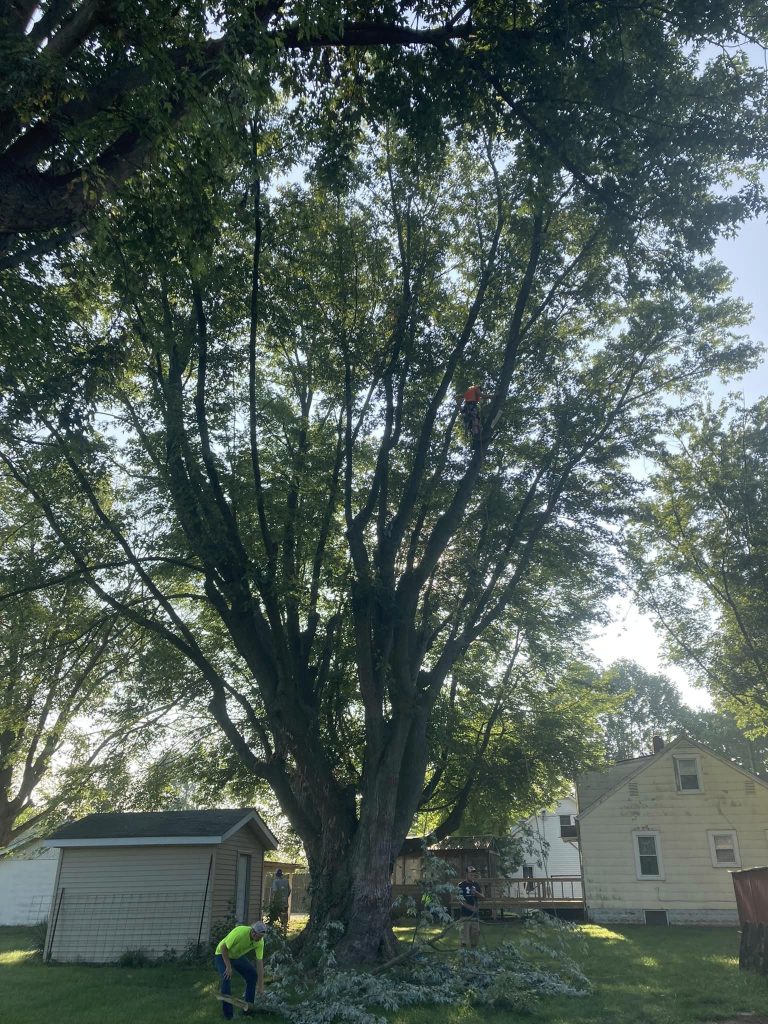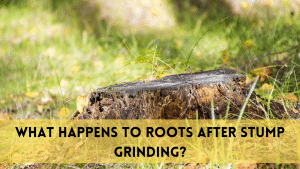Mistletoe, with its heartfelt implications during the Christmas season, could appear to be innocuous and enchanting, however it very well may be a quiet danger to the wellbeing and essentialness of your trees. This parasitic plant, having a place with the Viscaceae family, frequently slips by everyone’s notice until it has laid out a fortress on your darling trees. In this complete aide, we’ll investigate the universe of mistletoe, How to remove mistletoe from trees, and find powerful methods for eliminating it. Mistletoe isn’t your regular plant. It’s a hemiparasite, meaning it can photosynthesize its own food yet depends intensely on having trees for fundamental supplements and water. While it could appear as though a little bother, mistletoe can debilitate, disfigure, and eventually kill the trees it invades. Left unrestrained, it can transform your flourishing scene into a tree cemetery.
Figuring out Mistletoe
A. What is Mistletoe?
Mistletoe is an interesting yet possibly damaging plant that has caught the creative mind of numerous because of its merry relationship during the Christmas season. To successfully manage mistletoe persuasions on your trees, it’s vital to comprehend what mistletoe is and the way in which it works.
Mistletoe isn’t your run of the mill plant. It’s a hemiparasite, and that implies it has the one of a kind capacity to perform photosynthesis and produce its own starches, yet it depends intensely on trees for fundamental supplements and water. This semi-parasitic nature permits mistletoe to secure itself on an assortment of tree animal groups, from oaks and maples to pines and apple trees.
B. Kinds of Mistletoe
Understanding the various species and qualities of mistletoe is fundamental while managing invasions. While mistletoe comes in different structures, probably the most widely recognized types include:
European Mistletoe (Viscum collection): This is the famous mistletoe species frequently connected with occasion customs. It has particular oval leaves and white berries.
American Mistletoe (Phoradendron spp.): Normal in North America, American mistletoe has green leaves and white berries. It’s especially common in deciduous trees.
Bantam Mistletoe (Arceuthobium spp.): These more modest, subtle mistletoes are normally tracked down on coniferous trees. They can cause serious harm, and their presence may not be clear until they produce unmistakable, cone-like designs.
C. What Mistletoe Means for Trees
Mistletoe’s parasitic way of behaving can adversely affect have trees, including:
Supplement Channel: Mistletoe extricates water and supplements from the host tree, debilitating it over the long haul. This can prompt hindered development and diminished energy.
Primary Harm: As mistletoe develops, it can make thick bunches of foliage in the host tree’s overhang. This additional weight can make branches more helpless to break during tempests or high breezes.
Expanded Weakness: Pervaded trees are more defenseless to illnesses, bothers, and natural stressors. Mistletoe debilitates the tree’s regular protections.
Diminished Stylish Worth: Mistletoe-swarmed trees frequently seem unattractive, with bunches of mistletoe foliage contrasting the tree’s ordinary appearance.
Understanding these outcomes highlights the significance of distinguishing and eliminating mistletoe from trees as quickly as possibly. In the accompanying segments, we’ll dive into how to perceive mistletoe pervasions and investigate different strategies for viable expulsion to assist with guaranteeing your trees stay sound and lovely.
Recognizing Mistletoe
Before you can successfully eliminate mistletoe from your trees, you should have the option to distinguish it. Mistletoe frequently slips through the cracks until it has set up a good foundation for itself on a tree, so understanding the signs and qualities of mistletoe perversions is critical.
A. Indications of Mistletoe Pervasion
Strange Development: One of the clearest indications of mistletoe perversion is the presence of strange development in the covering of a tree. Search for groups of green foliage that appear to be awkward among the tree’s regular branches and leaves.
Leaves and Stems: Mistletoe leaves are normally unmistakable from the host tree’s leaves. They are many times oval or spear formed and might be evergreen or deciduous, contingent upon the mistletoe species. Also, mistletoe stems (shoots) are typically thicker and more delicious than the host tree’s limbs.
Berries: Mistletoe creates little, round berries that adjust to variety as they mature. The berries are much of the time white, yellow, or red, contingent upon the species. The presence of berries is an obvious sign of mistletoe, particularly in winter when the tree is leafless.
Twisted Branches: Mistletoe can cause the host tree’s limbs to become distorted or enlarged at the mark of connection. These distortions can be an indication of invasion.
Bird Action: Birds are much of the time liable for spreading mistletoe seeds. Assuming you notice an overflow of birds roosted in or around your tree, it very well may be a sign that mistletoe is available.
B. When and Where Mistletoe is Normally Found
Mistletoe perversions can happen in different areas and during various seasons:
All year Presence: Mistletoe can be tracked down all year, yet it’s generally expected to be more perceptible in the colder time of year when the host tree’s leaves have fallen, making the groups of mistletoe more noticeable.
Favored Host Trees: Mistletoe will in general lean toward specific tree species. In North America, you may generally find mistletoe on hardwoods like oaks, maples, and elms, as well as conifers prefer pines and tidies.
High Branches: Mistletoe commonly secures itself in the upper parts of trees. Look up to review the covering for indications of pervasion.
C. Significance of Exact Distinguishing proof
Precise ID is fundamental since mistletoe evacuation strategies and timing might shift relying upon the seriousness of the invasion and the particular mistletoe species included. Mistakenly distinguishing mistletoe could prompt ineffectual evacuation endeavors or superfluous damage to your trees.
In the accompanying areas of this aide, we’ll investigate strategies for securely and really eliminating mistletoe from your trees, considering the data you’ve accumulated during the ID cycle. Recollect that early identification and activity are vital to
Planning for Evacuation
Before you start the most common way of eliminating mistletoe from your trees, making a few preparations is pivotal. Legitimate arrangement guarantees your security and the viability of the evacuation cycle.
A. Best Opportunity to Eliminate Mistletoe
Timing is fundamental with regards to mistletoe evacuation. The best opportunity to eliminate mistletoe from trees is during the lethargic season, regularly in pre-winter or late-fall. Here’s the reason:
Visibility: In the lethargic season, the host tree has shed its leaves, making it simpler to detect mistletoe groups and survey the degree of the pervasion.
Decreased Effect on Host Tree: Eliminating mistletoe during torpidity is less unpleasant for the host tree since it’s not effectively developing. This limits the gamble of hurting the tree during the evacuation interaction.
Forestalling Seed Spread: By eliminating mistletoe before it creates new berries, you can assist with forestalling additionally spread of mistletoe to local trees.
B. Security Precautionary measures
Mistletoe evacuation might include ascending stepping stools or utilizing devices, so focusing on safety is essential. Here are some security safeguards to remember:
Defensive Stuff: Wear suitable security gear, including gloves, wellbeing glasses, and a protective cap in the event that you’re working at levels or utilizing devices.
Tough Stepping stool: On the off chance that you want to get to mistletoe bunches in higher branches, utilize a solid and stable stepping stool. Guarantee that somebody is available to hold the stepping stool for added dependability.
Devices Required for Evacuation: Contingent upon the technique you decide for expulsion (canvassed in later segments), set up the fundamental devices ahead of time, like pruning shears, saws, or proper synthetic substances.
C. Evaluating the Degree of Invasion
Before you start eliminating mistletoe, carve out an opportunity to survey the degree of the pervasion. This appraisal assists you with arranging your evacuation system and deciding how much mistletoe should be taken out. This is what to do:
Overview the Tree: Cautiously assess the whole tree, giving close consideration to the shade. Note the areas and size of mistletoe bunches.
Mark the Pervaded Regions: Utilize a shaded strip or non-harming marker to distinguish the branches or regions with mistletoe. This will assist you with focusing on your evacuation endeavors.
Photo the Invasion: Take photos of the tree and mistletoe groups to report the present status. This can be useful for following advancement and looking at pictures.
By adhering to these arrangements and security rules, you’ll be exceptional to begin the mistletoe evacuation process. In the resulting segments of this aide, we’ll investigate different strategies for eliminating mistletoe from trees, giving bit by bit directions and extra wellbeing tips to guarantee an effective expulsion while saving the soundness of your trees safeguarding your tree’s wellbeing and magnificence while destroying mistletoe pervasions.
Strategies for Mistletoe Expulsion
Now that you’ve recognized mistletoe invasions on your trees and made the important arrangements, now is the ideal time to investigate different strategies for eliminating mistletoe. The decision of strategy will rely upon variables like the seriousness of the pervasion, the kind of mistletoe, and your own inclinations. Here are the most generally utilized techniques:
A. Pruning
1. Pruning Shears or Hand Pruners:
Appropriate for little perversions.
Select sharp pruning shears or hand pruners.
Painstakingly cut the mistletoe stem where it appends to the host tree limb.
Discard the eliminated mistletoe appropriately.
2. Pruning Saw:
For bigger or more obstinate invasions.
Utilize a pruning saw to make a neat and tidy through the mistletoe stem and the host branch.
Guarantee the slice is near the host branch without harming it.
Discard the eliminated mistletoe appropriately.
Pruning Tips:
Make clean slices to limit harm to the host tree.
Clean your pruning devices when used to forestall the spread of infections.
Eliminate mistletoe during the torpid season for insignificant weight on the tree.
B. Synthetic Medicines
1. Herbicides:
For constant or broad perversions.
Select a herbicide explicitly named for mistletoe control.
Apply the herbicide as guided on the item mark to the mistletoe’s leaves or stems.
Keep security rules, and be careful not to hurt the host tree.
2. Development Controllers:
To decrease mistletoe’s development and effect.
Development controllers can be applied to hinder mistletoe’s capacity to develop and duplicate.
Adhere to producer directions cautiously.
Compound Treatment Tips:
Talk with a nearby arborist or horticulturist to guarantee you utilize the fitting synthetic compounds and application strategies.
Know about expected ecological effects, particularly while utilizing herbicides, and follow nearby guidelines.
C. Manual Evacuation
1. Hand-Pulling:
For little perversions with effectively open mistletoe.
Cautiously handle the mistletoe and pull it from the host tree.
Guarantee you eliminate the whole plant, incorporating the roots implanted in the host branch.
2. Girdling:
Powerful for mistletoe filling in thicker branches.
Utilize a sharp blade or etch to make a level cut around the mistletoe stem where it joins to the host branch.
Eliminate the mistletoe over the cut.
Manual Expulsion Tips:
Try not to harm the host tree’s covering or branches during manual evacuation.
Discard the eliminated mistletoe appropriately.
D. Elective Strategies
1. Social Controls:
Elevate generally speaking tree wellbeing to lessen mistletoe weakness.
Prune and dainty the tree’s shade to further develop air course and decrease mistletoe development.
Keep up with tree energy through legitimate watering and treatment.
2. Natural Controls:
Consider presenting regular hunters.
A few birds and bugs feed on mistletoe and can assist with controlling invasions.
Empower biodiversity in your nursery to draw in these regular hunters.
While picking an evacuation strategy, think about the size and area of the mistletoe invasions, the kind of mistletoe, and your solace level with the picked technique. No matter what the methodology you take, consistently focus on the security of yourself and the host tree. In the following segment, we’ll cover aftercare and move toward guaranteeing the proceeds with strength of your tree after mistletoe expulsion.
Aftercare and Tree Wellbeing
Congrats on effectively eliminating mistletoe from your trees! In any case, your work doesn’t end with the expulsion cycle. Appropriate aftercare and continuous tree upkeep are fundamental to guarantee your tree’s wellbeing and to forestall future mistletoe invasions.
A. Appropriately Discarding Eliminated Mistletoe
Discard the mistletoe you eliminated in a naturally mindful way. Mistletoe can in any case deliver seeds even after expulsion, so forestalling the spread of seeds to different trees is critical. This is the way to make it happen:
Stowing and Fixing: Place the eliminated mistletoe in a plastic pack and seal it firmly.
Rubbish Removal: Put the fixed pack in your normal rubbish, not in fertilizer or yard squander receptacles.
Composting: Try not to compost mistletoe, as it might possibly spread its seeds when treated the soil.
By appropriately discarding mistletoe, you decrease its gamble by regrowing or spreading to different trees in your space.
B. Observing the Tree’s Recuperation
After mistletoe evacuation, intently screen your tree’s condition to guarantee it recuperates well. This is what to search for:
New Development: Watch out for the tree for indications of new development in the areas where mistletoe was eliminated. Solid new branches and leaves are a positive sign.
Further developed Life: After some time, you ought to see an improvement in the tree’s general power, including expanded development and essentialness.
Protection from Mistletoe: With legitimate consideration, a sound tree is more impervious to future mistletoe invasions.
C. Forestalling Future Mistletoe Invasions
To keep mistletoe from getting back to your tree, think about these preventive measures:
Ordinary Tree Reviews: Consistently review your trees for early indications of mistletoe or different issues.
Pruning and Diminishing: Keep up with legitimate tree wellbeing by pruning dead or debilitated branches and diminishing the covering to further develop air dissemination.
Bird Obstructions: Use obstructions to deter birds from arriving on your trees and spreading mistletoe seeds.
Advance Tree Power: Guarantee your tree gets appropriate water, supplements, and care to keep it solid and less defenseless to mistletoe pervasions.
Proficient Discussion: Consider talking with an arborist for ordinary tree upkeep and mistletoe avoidance techniques.
By being proactive and mindful of your tree’s necessities, you can lessen the probability of future mistletoe invasions and keep a sound, flourishing scene.
Related Posts:
Conclusion
All in all, mistletoe evacuation is a basic move toward saving the wellbeing and magnificence of your trees. By figuring out mistletoe, recognizing pervasions, and picking the fitting evacuation strategy, you can successfully free your trees of this parasitic plant. Recollect that early recognition and activity are vital to effective mistletoe control. We trust this exhaustive aide has enabled you with the information and instruments expected to battle mistletoe perversions and guarantee your trees thrive long into the future. Assuming you have any further different kinds of feedback, make sure to go to nearby tree care experts or arborists for help. Much thanks to you for finding an opportunity to find out about mistletoe expulsion and its significance in keeping up with the soundness of your darling trees. Blissful tree care!
FAQs
- How would I keep mistletoe from returning after evacuation?
To keep mistletoe from returning, consistently investigate your trees for indications of invasion, keep up with legitimate tree wellbeing through pruning and watering, and consider bird obstacles to deter seed spread. Talking with an arborist for continuous tree care can likewise help.
- Is mistletoe unsafe to people or pets?
While mistletoe is for the most part thought to be harmful whenever ingested, the modest quantities experienced during evacuation are probably not going to represent a critical gamble. Notwithstanding, it’s ideal to stay away from contact with mistletoe and clean up completely in the wake of taking care of it.
- Could I at any point utilize custom made cures like vinegar to eliminate mistletoe?
Custom made cures are not commonly suggested for mistletoe expulsion. Successful evacuation frequently requires explicit apparatuses and, now and again, proficient grade herbicides. Utilizing inappropriate strategies may not completely annihilate the mistletoe or could hurt the host tree.
- What amount of time does it require for a tree to recuperate after mistletoe evacuation?
The recuperation time fluctuates relying upon the tree’s wellbeing, the degree of the invasion, and the expulsion strategy utilized. As a general rule, you can hope to see indications of recuperation, like new development, in no less than a little while, yet it might take more time for the tree to recover its life completely.
- Could I at any point eliminate mistletoe whenever of year, or is there a particular season for evacuation?
It’s ideal to eliminate mistletoe during the tree’s lethargic season, regularly in pre-winter or late-fall when the host tree has shed its leaves. This limits weight on the tree and makes it simpler to recognize mistletoe groups. In any case, on the off chance that you find mistletoe during different seasons, evacuation is as yet fitting to forestall further development and seed creation.




